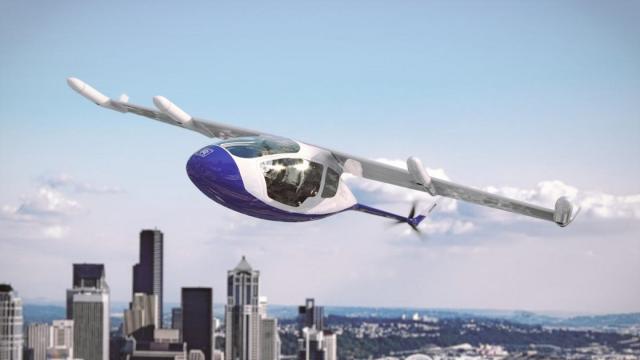The world is moving at a fast pace and there are people who look at possibilities of colonizing other planets. In this context, flying taxis are relevant because they can add zing to life by ensuring a system of point-to-point Travel in overcrowded cities minus traffic bottlenecks. The flying taxis could operate on the concept of electric vertical take-off and landing (eVTOL) and play an important role in such travel. In London, the ground-based transport infrastructure is near breaking point and drivers remain stuck in traffic for hours irrespective of whether the city is Los Angeles or Sydney.
It amounts to loss of not just time but also of opportunities. Robotics and artificial intelligence have become an integral part of our lives and society should take advantage of the latest in technology. An official of a Bristol-based startup says – “Ground infrastructure simply cannot keep up with increasing urbanization and the congestion it is causing.”
The flying taxi market is ready for takeoff, changing the travel experience forever https://t.co/upgrsZNr5J
— CNBC (@CNBC) March 7, 2020
The Guardian says flying taxis could soon come out of the realms of fantasy and become a reality. The aviation world is serious about this and major aviation and car companies are joining forces to launch this novel mode of commuting.
They have conducted test flights of the eVTOL aircraft. These could enter the market before 2025. One of the major operators expects to launch unmanned transportation by around 2030.
Flying taxis could make an impact
Some startup companies in Britain and the United States want to begin in a small way and aim for short distance travel of 100 to 150 miles.
A German company is toying with a range of 200 miles. Boeing is also trying to introduce flying taxis. All of them want the idea to take roots and gain public acceptance before expanding their reach. They want city dwellers to feel relaxed and get used to the idea of seeing aircraft regularly zipping about on aerial routes.
Such journeys would be fast and the companies would have to ensure that the economics are favorable. One way to economize is to go pilotless with monitoring by ground control. Uber expects this to happen within a decade.
Uber reveals plans for flying taxi to bypass road traffic congestion | #Cab4Now #News #London #Minicab #Uber #AddisonLee #Taxi
— Cab4Now.com (@Cab4Now) March 5, 2020
Read the article and don't forget to check if we're live with our #Malta #DashCam https://t.co/SgNxFNa6Zz
The Guardian says some other operators are aiming straightaway for apparently lucrative and congested routes across cities. Uber is a leading name in the business. It has announced plans for its eVTOL services in Dallas, Los Angeles and Melbourne by 2023.
A German company conducted its first manned urban test flight of its flying taxi. It was in Singapore for its two-seater eVTOL in October and it has plans for short city hops. This is an emerging market and the early bird will hope to catch the worm.
City transport of the future could be flying taxis
According to CNBC, the time is fast approaching for flying taxis to come to the rescue of city folks. They have to battle it out with traffic jams in order to reach their destinations in time. In future, city transport might depend on flying taxis. Many major brands plan to enter the market in a big way with flying taxis cruising at 180 mph at altitudes of around 1,000 ft. to 2,000 ft. However, NASA says they can go at an altitude of up to 5,000 ft.
A Morgan Stanley Research indicates a market that may be worth $1.5 trillion by 2040. Another study foresees these taxis begin operating in 2022 in Dubai. It could expand to more than 430,000 units in operation by 2040 by virtue of a confluence of various technologies related to drones, self-driving cars, batteries that are more efficient and advanced manufacturing techniques.
Short haul aerial trips could mean flying taxis
Innovation is necessary for survival in view of the fast changing scenario on all fronts. One is in the field of travel, especially in the case of short distance travel in cities. The commuter has two options to beat the chaotic condition of traffic on the roads. These are either underground or aerial. The former has been there for a long time and has proved its usefulness. The latter is trying to edge its way in and the focus is now on the eVTOL flying taxis.
![One of Volocopter’s flying taxis over Marina Bay, Singapore. [Image source/CAN YouTube video] One of Volocopter’s flying taxis over Marina Bay, Singapore. [Image source/CAN YouTube video]](https://staticr1.blastingcdn.com/media/photogallery/2020/3/8/660x290/b_502x220x82/one-of-volocopters-flying-taxis-over-marina-bay-singapore-image-sourcecan-youtube-video_2414309.jpg)


